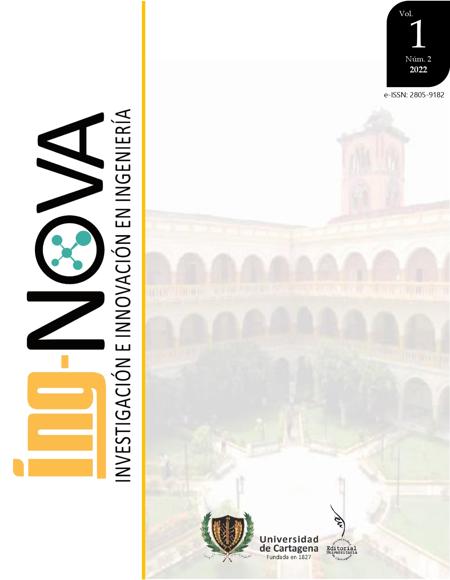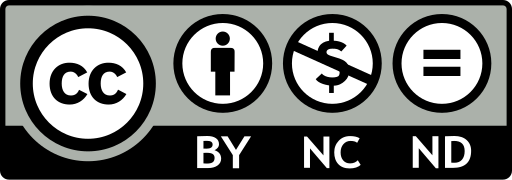Modelo mejorado de gas lattice en la adsorción de monóxido de carbono y oxígeno
Improved model of lattice gas in the adsorption of carbon monoxide and oxygen
Contenido principal del artículo
Resumen
La adsorción y posterior oxidación del monóxido de carbono (CO) en una superficie de platino (Pt) se ha estudiado utilizando métodos computacionales. El método de Monte Carlo se utiliza para este fin a través del modelo de red. Este estudio se centra en la mejora de este primer modelo teórico (ZGB) propuesto para la oxidación de CO. En este trabajo, se revisan en detalle cuatro modelos diferentes con el objetivo de establecer una comparación entre los resultados obtenidos sobre la oxidación de CO en el Pt con una superficie de orientación (111). Esta absorción depende de la concentración inicial de CO en la fase gaseosa y el número de sitios vacantes en la superficie del Pt. La variación entre los tres modelos radica en la naturaleza del coeficiente de pegado de las moléculas de CO y oxígeno (O2) en Pt [111]. Esta adsorción depende de la concentración inicial de CO en la fase gaseosa y del número de sitios vecinos disponibles. Los resultados obtenidos en estas simulaciones muestran que el primer modelo, el modelo ZGB, difiere considerablemente de los otros modelos y, por lo tanto, los resultados con el segundo y tercer modelo tienen un mejor ajuste en la adsorción de las moléculas de CO y O2, ya que toman en cuenta la concentración de gas, el coeficiente de pegado y la interacción con las partículas vecinas. En este sentido, la reacción de oxidación ocurre en un rango de alrededor 0.5 fracción molar de CO y 0.2 de O atómico, y el envenenamiento de la superficie catalítica de platino puede inhibirse si se incluye la concentración de monóxido de carbono como parámetro de control.
Palabras clave:
Descargas
Detalles del artículo
Referencias (VER)
A. Bhalla, V. Suri, and J. Nayer, “Carbon monoxide poisoning,” Princ. Pract. Crit. Care Toxicol., pp. 162, 2019.
B. I. Kharisov and O. V. Kharissova, “Carbon Allotropes in the Environment and Their Toxicity,” Carbon Allotropes: Metal-Complex Chemistry, Properties and Applications, Springer, 2019, pp. 639–652.
S. Manahan, Environmental chemistry. CRC press, 2017.
S. Dey and G. C. Dhal, “Materials progress in the control of CO and CO2 emission at ambient conditions: An Overview,” Mater. Sci. Energy Technol., 2019.
R. Rani and R. Prasad, “Studies of carbon monoxide oxidation at ambient conditions,” Recent Res. Sci. Technol., 2014.
Y.-C. Yao, J.-H. Tsai, H.-F. Ye, and H.-L. Chiang, “Comparison of exhaust emissions resulting from cold-and hot-start motorcycle driving modes,” J. Air Waste Manage. Assoc., vol. 59, no. 11, pp. 1339–1346, 2009.
P. Kostrobij, I. Ryzha, and B. Markovych, “Mathematical model of carbon monoxide oxidation: influence of the catalyst surface structure,” Math. Model. Comput., vol. 5, no. 2, pp. 158–168, 2018.
A. Liu et al., “Getting Insights into the Temperature-Specific Active Sites on Platinum Nanoparticles for CO Oxidation: A Combined in Situ Spectroscopic and ab Initio Density Functional Theory Study,” Acs Catal., vol. 9, no. 9, pp. 7759–7768, 2019.
I. Ryzha and O. Gaiduchok, “Mathematical model for carbon monoxide oxidation: influence of diffusion effects,” Math. Model. Comput., no. 6, Num. 1, pp. 129–136, 2019.
J. Kim, M. C. Noh, W. H. Doh, and J. Y. Park, “In situ observation of competitive CO and O2 adsorption on the Pt (111) surface using near-ambient pressure scanning tunneling microscopy,” J. Phys. Chem. C, vol. 122, no. 11, pp. 6246–6254, 2018.
S. Krick Calderón, M. Grabau, L. Óvári, B. Kress, H.-P. Steinrück, and C. Papp, “CO oxidation on Pt (111) at near ambient pressures,” J. Chem. Phys., vol. 144, no. 4, pp. 44706, 2016.
K. Sugiyama, Y. Sumiya, M. Takagi, K. Saita, and S. Maeda, “Understanding CO oxidation on the Pt (111) surface based on a reaction route network,” Phys. Chem. Chem. Phys., vol. 21, no. 26, pp. 14366–14375, 2019.
R. Vakili et al., “Understanding the CO oxidation on Pt nanoparticles supported on MOFs by operando XPS,” ChemCatChem, vol. 10, no. 19, pp. 4238–4242, 2018.
M. A. Van Spronsen, J. W. M. Frenken, and I. M. N. Groot, “Surface science under reaction conditions: CO oxidation on Pt and Pd model catalysts,” Chem. Soc. Rev., vol. 46, no. 14, pp. 4347–4374, 2017.
K. Binder and P. Virnau, “Overview: Understanding nucleation phenomena from simulations of lattice gas models,” J. Chem. Phys., vol. 145, no. 21, pp. 211701, 2016.
V. I. Elokhin, E. I. Latkin, A. V Matveev, and V. V Gorodetskii, “Application of statistical lattice models to the analysis of oscillatory and autowave processes in the reaction of carbon monoxide oxidation over platinum and palladium surfaces,” Kinet. Catal., vol. 44, no. 5, pp. 692–700, 2003.
D.-J. Liu and J. W. Evans, “Realistic multisite lattice-gas modeling and KMC simulation of catalytic surface reactions: Kinetics and multiscale spatial behavior for CO-oxidation on metal (100) surfaces,” Prog. Surf. Sci., vol. 88, no. 4, pp. 393–521, 2013.
K. Binder, “Monte Carlo calculation of the surface tension for two-and three-dimensional lattice-gas models,” Phys. Rev. A, vol. 25, no. 3, pp. 1699, 1982.
W. Selke, K. Binder, and W. Kinzel, “Lattice gas models with competing interactions,” Surf. Sci., vol. 125, no. 1, pp. 74–93, 1983.
C. N. Yang and T. D. Lee, “Statistical Theory of Equations of State and Phase Transitions. I. Theory of Condensation,” Phys. Rev., vol. 87, no. 3, pp. 404–409, 1952.
R. M. Ziff, E. Gulari, and Y. Barshad, “Kinetic phase transitions in an irreversible surface-reaction model,” Phys. Rev. Lett., vol. 56, no. 24, pp. 2553, 1986.
G. M. Buendía, “A model for the catalytic oxidation of CO that includes a finite reaction rate between the CO and the O adsorbed on the lattice,” J. Comput. Methods Sci. Eng., vol. 17, no. 1, pp. 55–62, 2017.
J.-P. Hovi, J. Vaari, H.-P. Kaukonen, and R. M. Nieminen, “Simulations of the effect of preadsorbed poisons and promoters on irreversible surface reactions,” Comput. Mater. Sci., vol. 1, no. 1, pp. 33–41, 1992.
S. R. Longwitz et al., “High-coverage structures of carbon monoxide adsorbed on Pt (111) studied by high-pressure scanning tunneling microscopy,” J. Phys. Chem. B, vol. 108, no. 38, pp. 14497–14502, 2004.
N. Zamel and X. Li, “Transient analysis of carbon monoxide poisoning and oxygen bleeding in a PEM fuel cell anode catalyst layer,” Int. J. Hydrogen Energy, vol. 33, no. 4, pp. 1335–1344, 2008.
K. M. Khan and K. Yaldram, “The effect of subsurface layer on the phase diagram of CO–O2 catalytic reaction: a computer simulation study,” Surf. Sci., vol. 445, no. 2–3, pp. 186–194, 2000.
E. S. Loscar and E. V Albano, “Hysteretic effects in the first-order irreversible phase transition of the ZGB model,” Comput. Phys. Commun., vol. 180, no. 4, pp. 488–492, 2009.
N. V. Petrova and I. N. Yakovkin, “Lateral interaction and CO adlayer structures on the Pt () surface,” Surf. Sci., vol. 519, no. 1–2, pp. 90–100, 2002.
A. Gómez Labrador, “Simulación de Reacciones químicas catalizadas sobre superficies homogéneas y fractales.” Universidad de Sevilla, Sevilla, 2005.
N. V. Petrova and I. N. Yakovkin, “Monte Carlo simulation of CO and O co-adsorption and reaction on Pt (111),” Surf. Sci., vol. 578, no. 1–3, pp. 162–173, 2005.
V. P. Zhdanov and B. Kasemo, “Kinetic phase transitions in simple reactions on solid surfaces,” Surf. Sci. Rep., vol. 20, no. 3, pp. 113–189, Apr. 1994.
A. M. Gomez-Marin and J. P. Hernández-Ortiz, “Langmuir--Hinshelwood Mechanism Including Lateral Interactions and Species Diffusion for CO Electro-Oxidation on Metallic Surfaces,” J. Phys. Chem. C, vol. 118, no. 5, pp. 2475–2486, 2014.
G. L. Hoenicke, M. F. De Andrade, and W. Figueiredo, “Critical properties of the Ziff, Gulari, and Barshad (ZGB) model with inert sites,” J. Chem. Phys., vol. 141, no. 7, pp. 74709, 2014.
R. da Silva and H. A. Fernandes, “Highly detailed computational study of a surface reaction model with diffusion: Four algorithms analyzed via time-dependent and steady-state Monte Carlo simulations,” Comput. Phys. Commun., vol. 230, pp. 1–9, 2018.
H. A. Fernandes and R. da Silva, “Mapping the phase transitions of the ZGB model with inert sites via nonequilibrium optimizing methods,” J. Stat. Mech. Theory Exp., vol. 2019, no. 5, pp. 53205, 2019.
E. B. Vilela, H. A. Fernandes, F. L. P. Costa, and P. F. Gomes, “Phase diagrams of the ZGB model on random networks,” arXiv Prepr, pp. 1-10, 2020.
Y. Y. Yeo, L. Vattuone, and D. A. King, “Calorimetric heats for CO and oxygen adsorption and for the catalytic CO oxidation reaction on Pt (1 1 1),” J. Chem. Phys., vol. 106, no. 1, pp. 392, 1997.
T. J. Ypma, “Historical development of the Newton--Raphson method,” SIAM Rev., vol. 37, no. 4, pp. 531–551, 1995.
J. W. Backus et al., “The FORTRAN automatic coding system,” in Papers presented at the February 26-28, 1957, western joint computer conference: Techniques for reliability, pp. 188–198, 1957.
N. Metropolis and S. Ulam, “The monte carlo method,” J. Am. Stat. Assoc., vol. 44, no. 247, pp. 335–341, 1949.
D.-J. Liu and J. W. Evans, “Realistic multisite lattice-gas modeling and KMC simulation of catalytic surface reactions: kinetics and multiscale spatial behavior for CO-oxidation on metal (1 0 0) surfaces,” Prog. Surf. Sci., vol. 88, no. 4, pp. 393–521, 2013.
V. K. Noussiou and a. Provata, “Kinetic Monte Carlo simulations of the oscillatory CO oxidation at high pressures: The surface oxide model,” Chem. Phys., vol. 348, no. 1–3, pp. 11–20, 2008.
E. Machado and G. M. Buendía, “Response of a model for catalytic oxidation of CO to periodic variation of the reactant’s pressure,” Rev. Mex. física, vol. 52, pp. 42–44, 2006.
V. P. Zhdanov and B. Kasemo, “The effect of oxide formation on bistability in CO oxidation on Pt,” J. Catal., vol. 220, no. 2, pp. 478–485, 2003.



 PDF
PDF
 FLIP
FLIP





